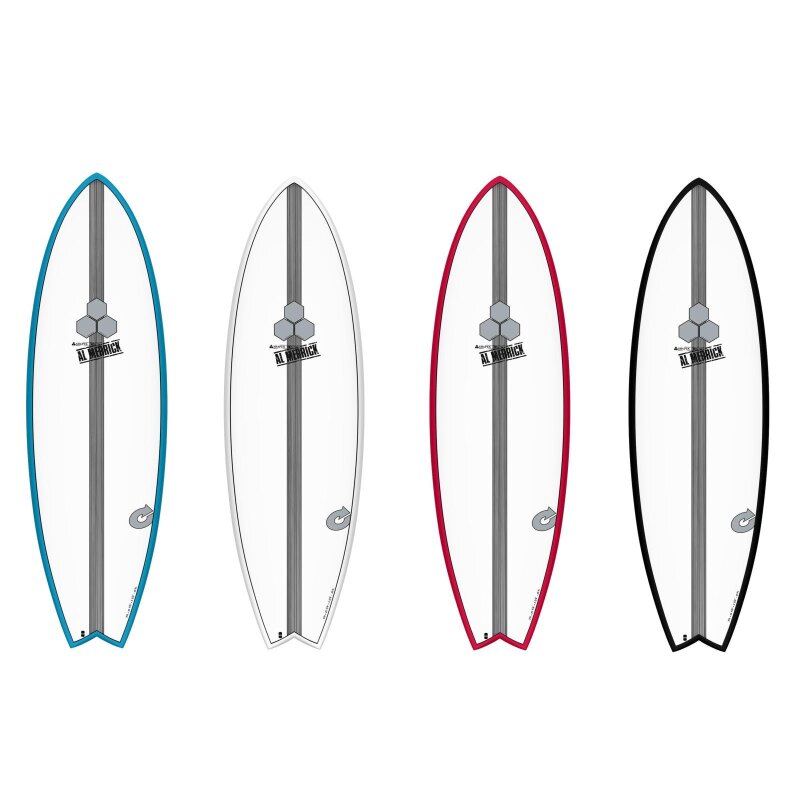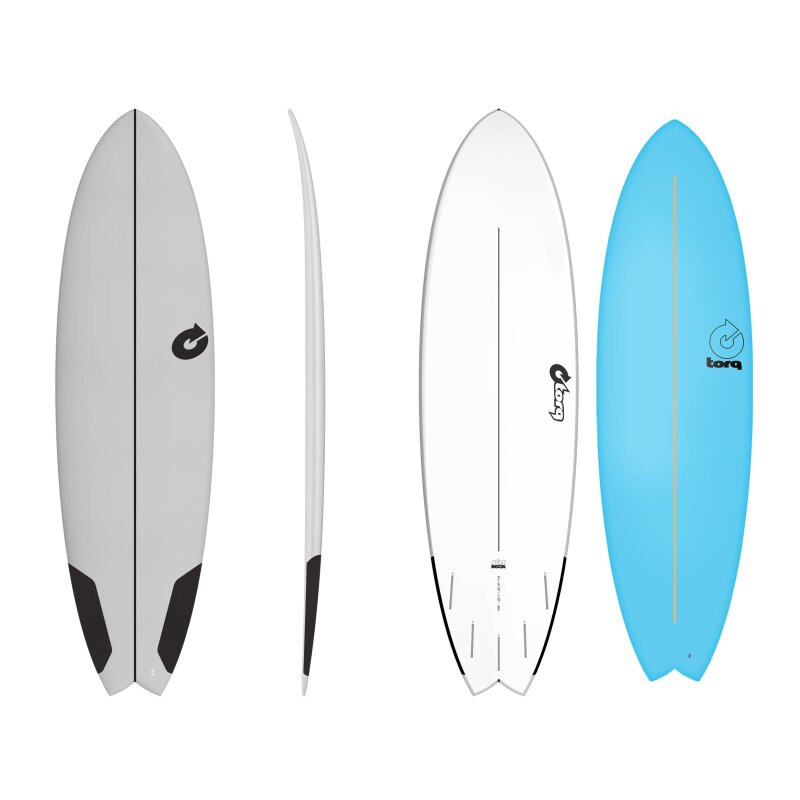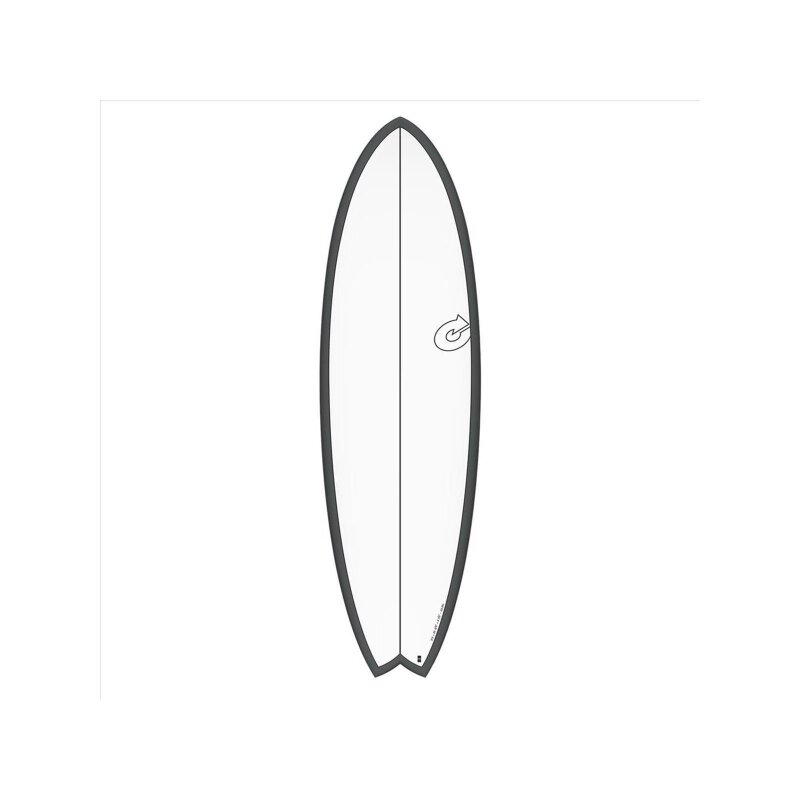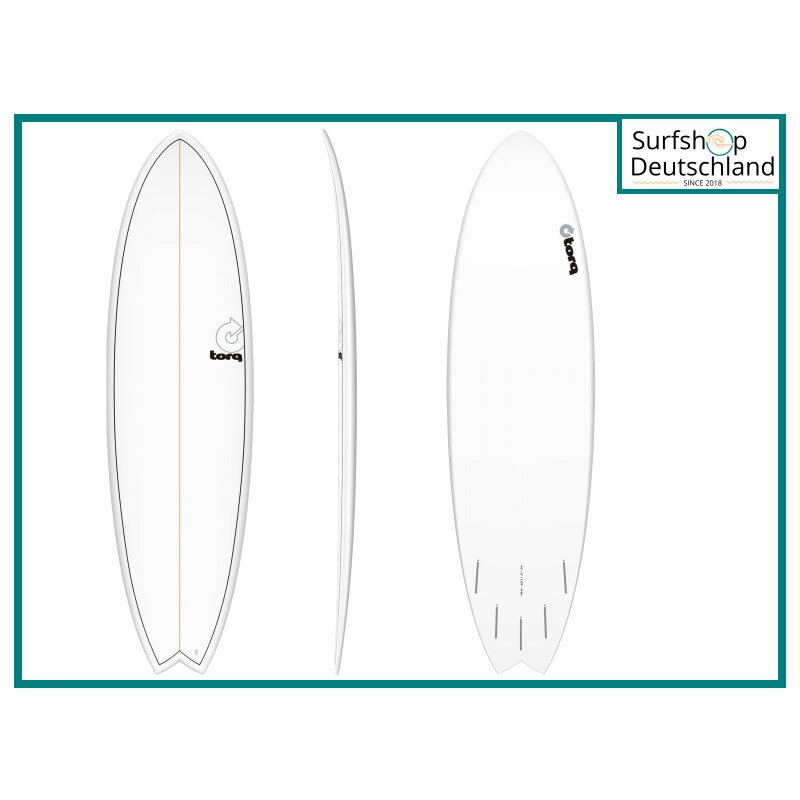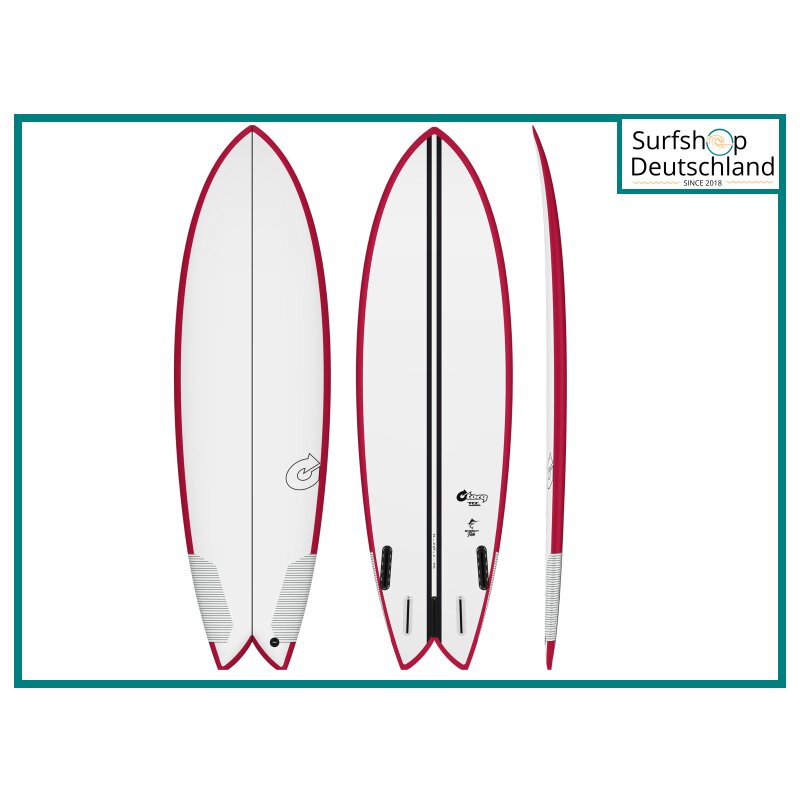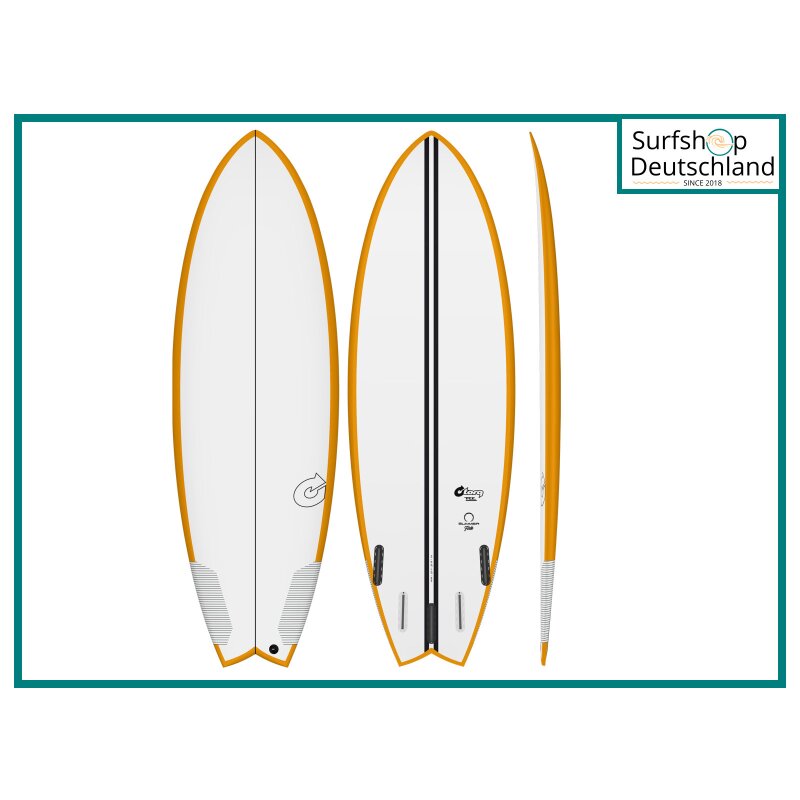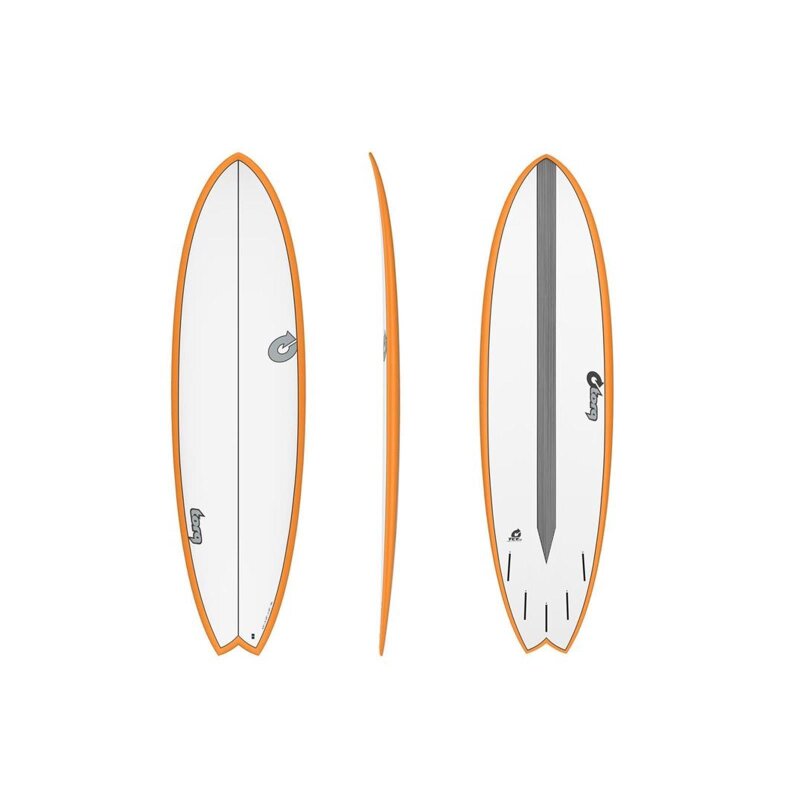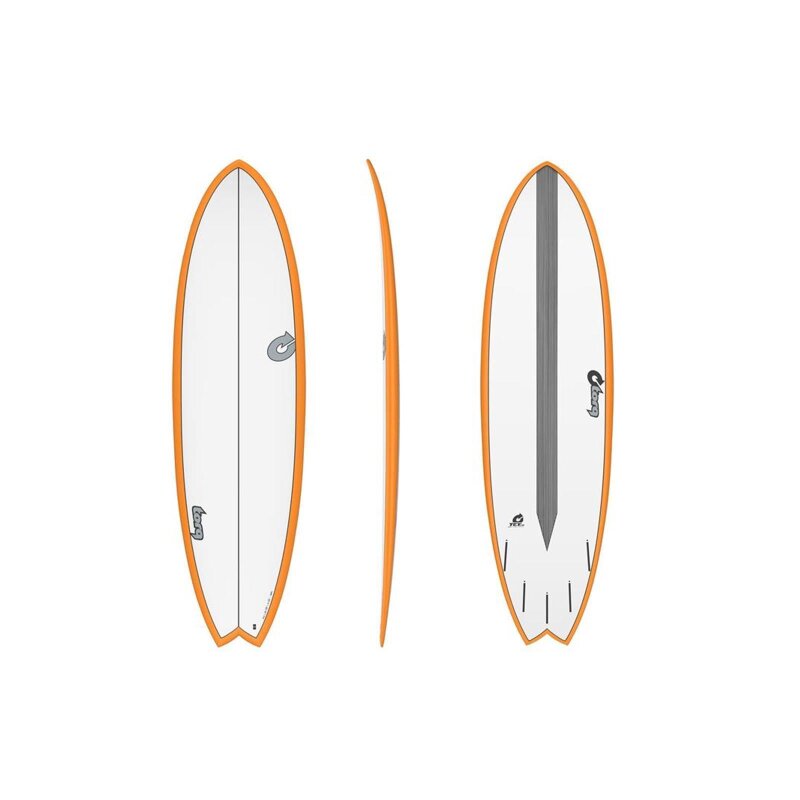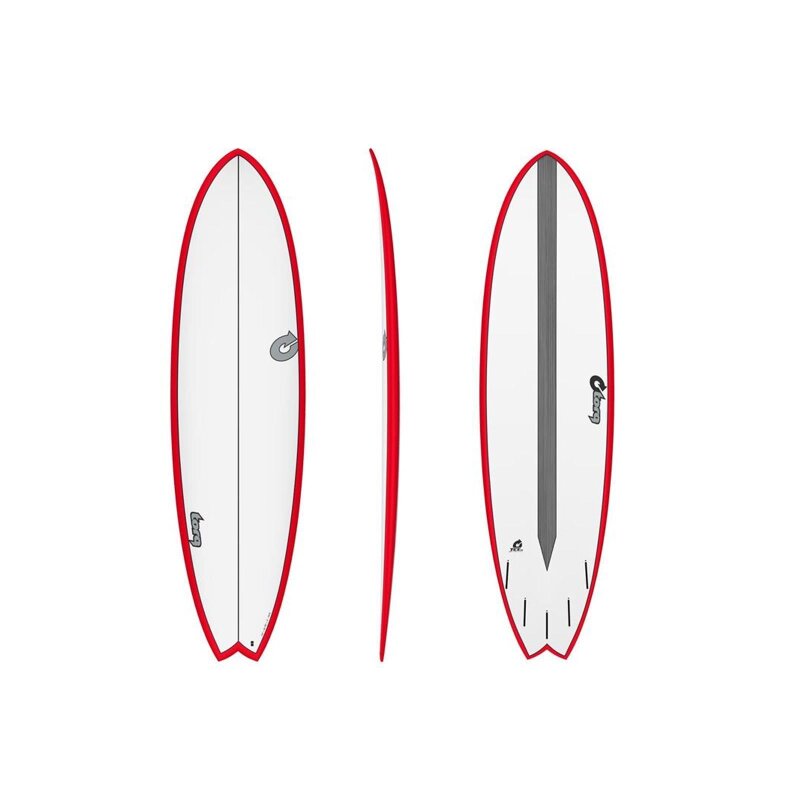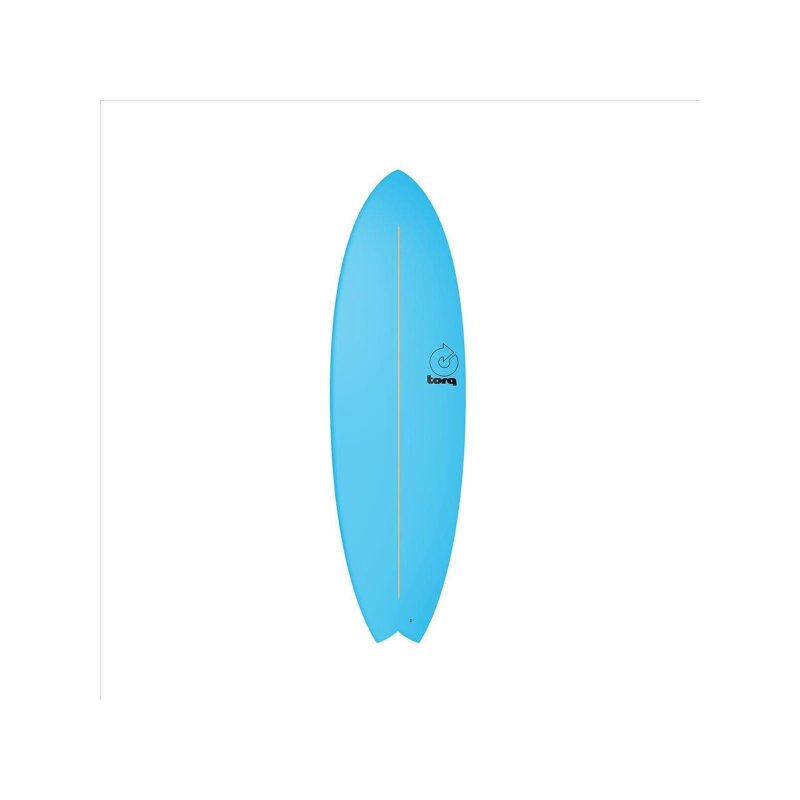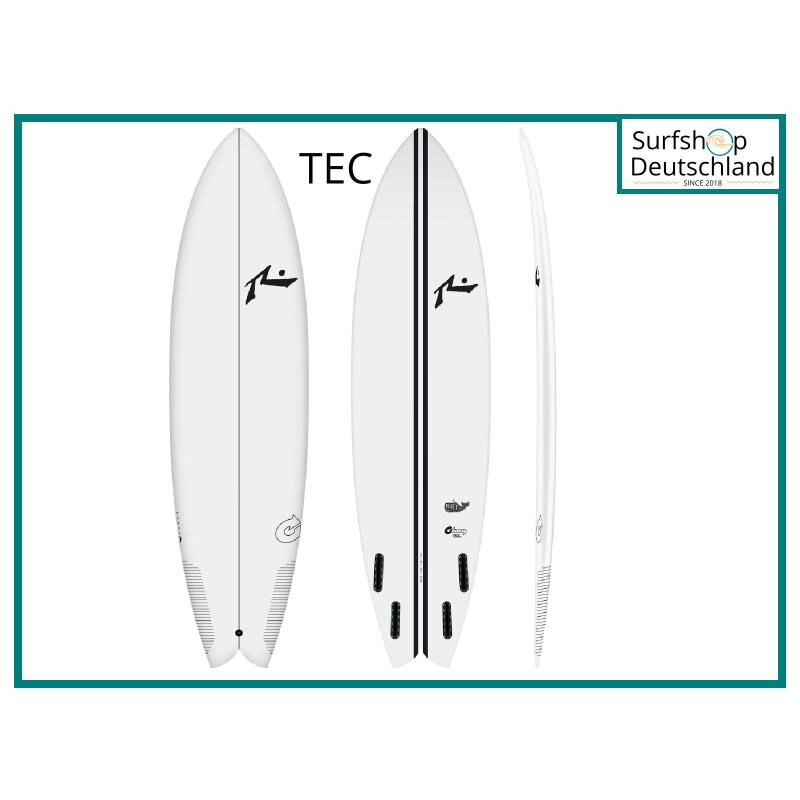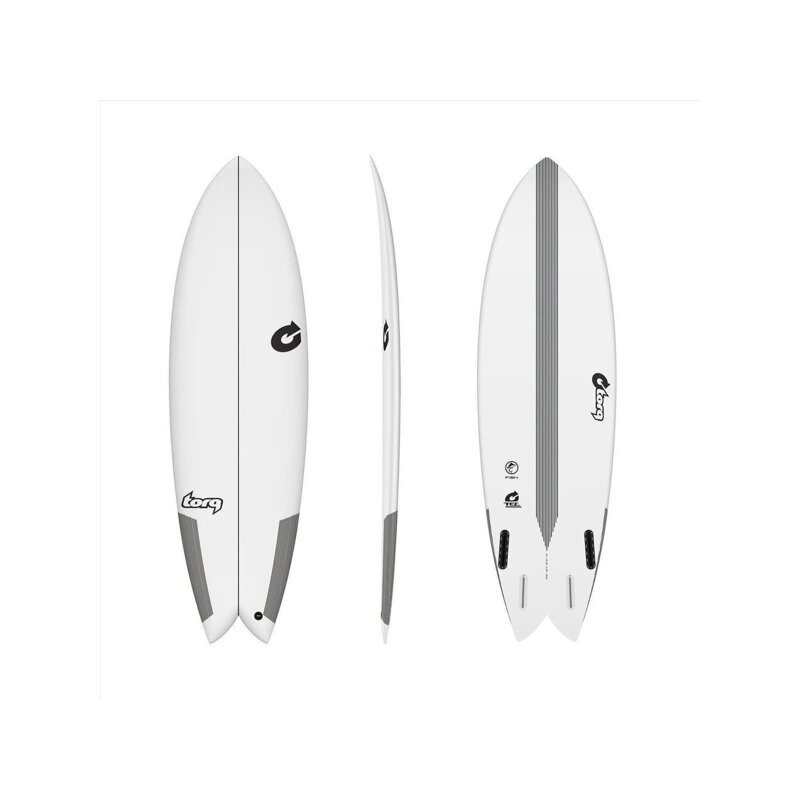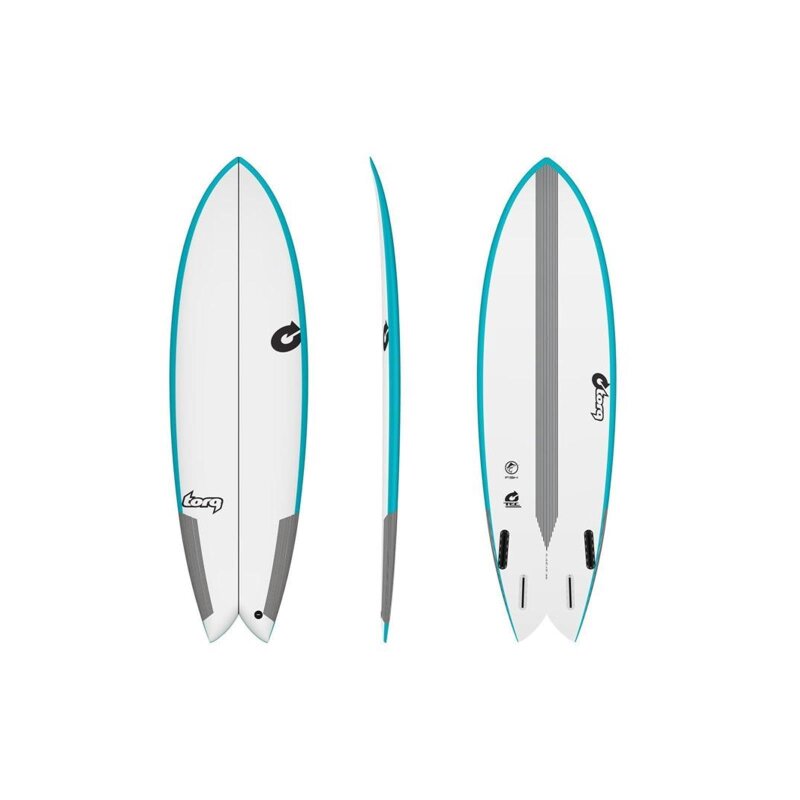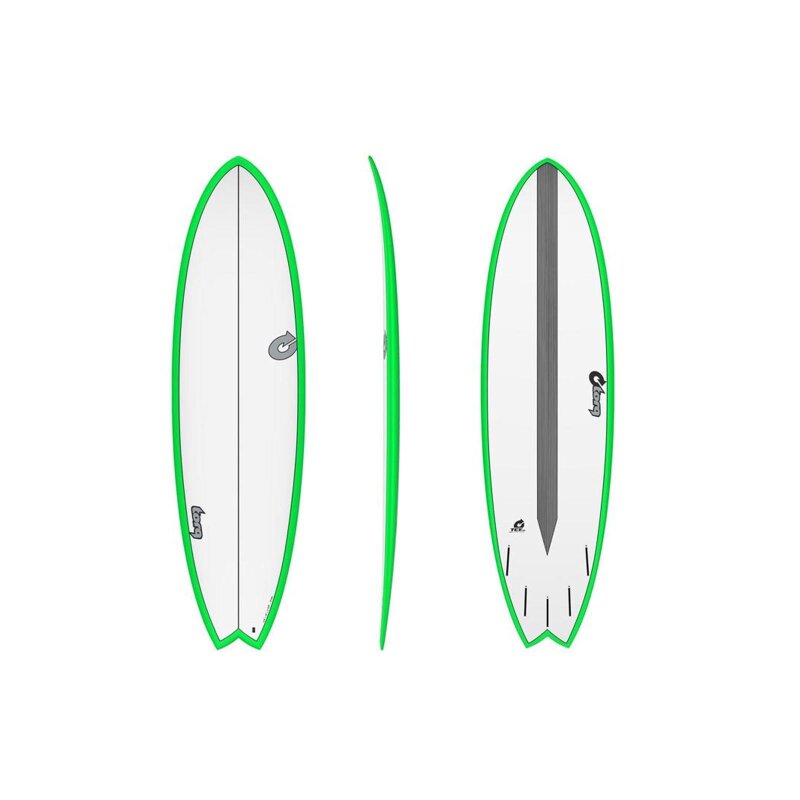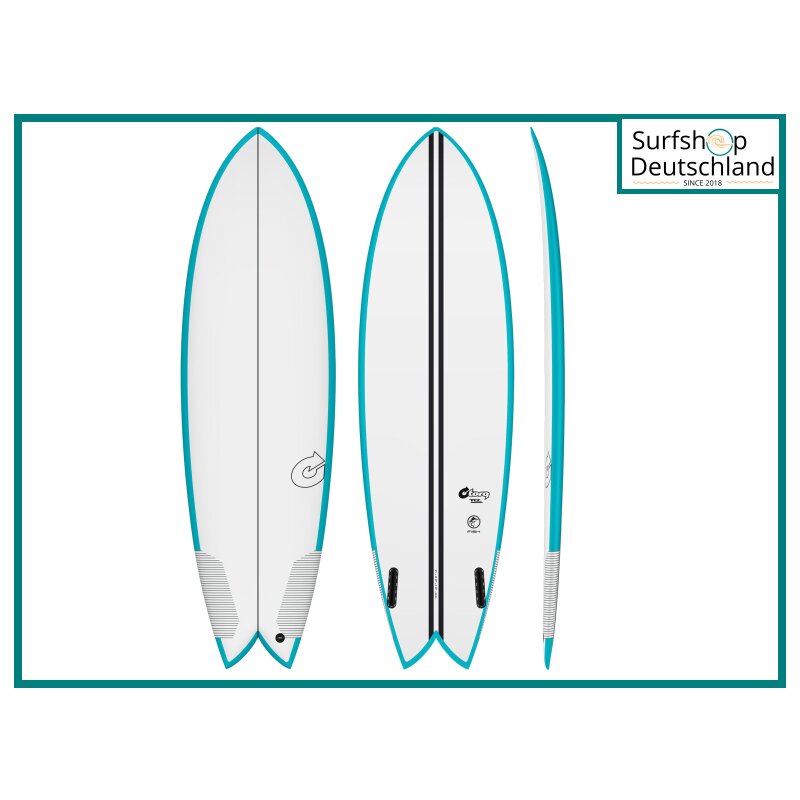Your Fish Surfboard Buyers Guide & Fishboard shopping advice

Discover our big surfboard shopping guide.
Discover our Fish surfboard in a large selection in our surf shop. The fish board has its origins in the 70s. Buy a Fish surfboard and give your next surf session a loose surf feeling and a touch of the hippie era. A Fish is the perfect surfboard for small waves and the precursor to being able to surf a shortboard properly. Train your cutbacks. Use our big fishboard buyers guide and shopping advice.
Retro Fish
Retro Fish surfboards convince with a loose surf feeling, long cutbacks and surfing in the flow of the wave. A high wave yield and soul-surfer feeling characterise this board. Feel like in the 70s and feel the waves.
Das Performance Board
Performance Fish surfboards convince with high performance elements and the surf feeling of the 70s. Fast, cutbacks, tuberides and airs are no problem with these new-schoolers. Most of these boards have a quad fin setup for more grip.
Twin Fin
Twin Fin Fish surfboards offer you very good surfing behaviour when you want to surf in the flow. Back door tubes and wide long cutbacks. Play with the wave and school your backfood for more board feel. Simon Anderson says hello.
Quad Fin
Quad Fish surfboards give you more grip in the wave wall and give you the option of easier backdoor tuberides. Two smaller fins on each side replace the wide long keel fins. Provides a little more performance and stability.
Fishboards are available in two different designs. One is a retro shape and the other is a high performance shape. A retro shape offers you super planing behaviour and a high wave yield. Cutbacks and the lazy surf style of the 70s are the trademark. A high performance fishboard combines smooth surfing with radical manoeuvres and high speed turns.
- Retro Shape - loose surfing behaviour and high wave yields.
- High Performance Fish - radical manoeuvres and speed turns combined with a loose surfing behaviour.
These surfboards are between 5'4 to 6'6 feet long and close the gap between a funboard and a shortboard. A fishboard is much more agile than a funboard. This makes it much easier to surf more radical turns and manoeuvres.
- Size: approx. 5 - 6 feet
- Waves: Small / Medium
- Skill Level: Advanced / Pro
Compared to the funboard, fishboards have less rocker and a wider nose. The volume of the board is in the nose area, so you get more waves. The tail is cut sharper and in combination with the swallowtail, which acts like two pin tails and a squaretail, you can combine high-speed turns with more radical manoeuvres.
However, there are also shortboards and other shapes with a swallowtail, these are not fish boards and usually only suitable for very advanced surfers.
Steve´s conclusion:
Fish surfboards are surfed in small to medium sized waves and are rarely suitable for beginners. A Fish is a huge fun machine in smaller waves.
A fishboard offers you many advantages when surfing. We have listed these for you:
- High wave yield
- Good buoyancy
- good planing behaviour
- relatively forgiving surfing behaviour
- suitable for small waves
- suitable for medium height waves
- cutbacks, hishspeed turns, very manoeuvrable
- Duckdives are possible
- Preliminary stage of shortboarding
The wider nose gives you a high wave yield. Due to the larger volume than on a shortboard, it glides on more easily, generates speed and allows you to ride around weaker sections of the wave.
Surfing on a fishboard is very different from surfing on a funboard. You get the waves much later and the take-offs take place on a steeper part of the wave. But you can turn a fish much faster.
Steve´s conclusion:
A fishboard is the next step to a shorter surfboard. You should never skip this step. Learn to start a wave later and your take off needs to be done much faster. To really surf a wave, it must be executed perfectly, otherwise you will not ride a wave.
For one advantage for the other disadvantage. Here we have compiled the disadvantages for you.
- not as radical as a hybrid shape or shortboard
- later take off is more difficult than with a funboard
- steep waves only surfable with a gentle take off zone.
A fishboard is not as forgiving as a funboard and does not glide as well, but it has other advantages.
Fishboard and beginner - does it fit?
There is no general answer to whether a fishboard is suitable for beginners. A fishboard is much more agile than a funboard and the take-off is much more difficult. If you surf top turns and bottom turns regularly and cleanly on a funboard, then a fishboard is suitable for a surfing beginner.
Steve´s Tip:
The difficult take off and the very agile surfing characteristics demand a lot from you as a surfer. For all other beginners, I recommend a Minimalibu.
If you want to buy a fishboard, it should be well considered! The workmanship of the surfboard is definitely important. You should not make any compromises here. Cheap surfboards break much faster and the performance is not the best either. If you value environmentally friendly processing, look out for bio-based epoxy. Polyester resin is much more harmful to the environment.
You should also consider what you want to use it for.
- a retro fish surf style
- a more radical high performance style
Your height and weight is another important point. You should choose a fish in your height minus approx. 10cm. However, this is only a rough guide!
Ask yourself these questions before buying:
- Which surf style do you want to learn or surf?
- How tall and heavy are you?
- How is the fishboard made?
Steve´s Tip:
With a pure retro fish shape you will have a lot of fun in small waves up to 2 metres. Here you will experience a completely different surfing and you will expand your sufskills.
You should only choose a high performance fish if you already have some experience on a shortboard.
There are also different fishboard shapes for different conditions and different manoeuvres.
There are fishboards for retro surfing, these surfboards are surfed as TWIN FIN and are very manoeuvrable. These fish surfboards bring a lot of fun when you surf rail to rail.
There are fish boards that are very performance oriented and mostly equipped with a quad fin setup. This makes very radical manoeuvres possible. These shapes come very close to a shortboard.
There are fishboards with different fin setups such as Twin Fin (two fins) and Quad Fin (four fins). Very rare is the option to surf these boards as twin fin with a small tail fin.
These are the most important fishboard shapes:
- These are the most important fishboard shapes:
- Retro Fish
- Performance Fish
- Twin Fin
- Quad Fin
- Twin Fin with small fin in the centre
Steve´s Tip:
When you buy your first Fish surfboard, choose a retro shape or a shape based on a retro shape. This will help you get started surfing with a short board.
The length of a fishboard is very important when deciding what to buy.
When buying a fishboard, you should definitely pay attention to the length.
The following rule of thumb applies to determine the right size.
Body height - approx. 15 cm
- If your fishboard is too short, you will hardly catch any waves and your movements will be restricted.
- If the board is too long, you will find it harder to turn and at higher speeds it will become very unstable.
Steve´s Tip:
To find the right fishboard for you, use our professional buying guide.
There are two important fin set ups for the fishboard. Which fin setup you should choose depends on what kind of waves you want to surf and which surf style you follow.
-
Twin Fin: The twin fin is very manoeuvrable. This is the standard fin setup and gives the board the characteristic retro surfing behaviour.
-
Quad Fin: This is mostly used in performance fishboards and gives them more drive, speed and control at the same time.
-
Twin Fin with small centre fin: The centre fin gives your board more stability at higher speeds.
Steve´s Tip:
If you haven't surfed a shortboard before and want to switch to a shorter surfboard, a Retro Fish is just the thing for you!
You can surf a fishboard in small and weak waves. Due to the volume in the nose, the surfboard glides on relatively easily and generates speed on its own.
Tuberides are also possible, but only in a performance wall where a tube opens up. Steep take-offs do not like a fish and are almost impossible to stand.
You have real fun in conditions between 2 - 6 feet. Here you can surf all manoeuvres and play with the wave.
A Fishboard is suitable for:
- small waves
- medium waves
- soft waves
- point breaks
- reef breaks
- Beachbreaks
- Tuberiding
- Norse waves
- mushy surf
A fishboard for children? Does that make sense?
The answer to the question of whether a fishboard makes sense for children is a resounding YES.
Children can easily surf on a fishboard and improve their skills. You should only make sure that the board is not too long and too wide to be able to paddle it properly. For the start, we recommend a fishboard with a thruster fin option.
What does a fishboard cost?
- from 400 euros - poor quality and average performance.
- around 500€ - solid workmanship and performance
- from 700€ Premium Fish Surfboards for real pleasure
Steve´s Tip:
If you love this sport, you should definitely look in the top price range - It's worth it!
Fish Surfboard Videos
Here we show you a few videos that were shot with Fish Surfboards. The videos were provided by Torq Surfboards.



























































